Lettuce is a versatile, simple-to-grow microgreen that comes in various hues, forms, and sizes. The home gardener can grow a variety of lettuce microgreens types in the same seedling tray because many seed suppliers offer a blend of lettuce types with the same germination and growth rate.
If Like to know more about microgreens, check these articles:
<<What Are Microgreens >> and <<Microgreens Benefits for Skin>>
Lettuce History
Lettuce was initially grown in ancient Egypt to get oil from its seeds. Egyptians developed the plant to produce a variety grown for its edible leaves. According to the evidence, its cultivation began as early as 2680 BC.
The plant is thought to aid god in performing sexual deeds firmly. It is used to create various images for tombs and wall paintings. The cultivated variant was 30 inches long and looks like a huge version of romaine lettuce today.
Lettuce made its appearance as a healing herb in medieval texts. Between 1098 and 1179, Hildegard of Bingen referred to it in her writings on medicinal plants. In 1586, Joachim Camerarium described head lettuce, loose leaf lettuce, and romaine or cos lettuce. Christopher Columbus brought it to the Americas from Europe in the late 15th century.
Many variants were created in Europe between the late 16th and the early 18th centuries. In the 1900s, new storage, shipping, and packing techniques increased the longevity and transportability of lettuce, which led to an increase in availability [1].
Romaine lettuce
Lettuce microgreen varieties
Today there are numerous lettuce varieties available. Butterhead, Celtuce, Crisp head/Iceberg, Loose-leaf, Romaine, Summer Crisp, Lamb, Red Lollo, Black-Seeded Simpson, and Red Salad Bowl are among these varieties [1, 2].
Most of these variants can be grown as microgreens, although Romaine lettuce is the best choice. This variety is more common and has the highest nutritional value. Additionally, today mixed lettuce seeds are readily available for growing as a microgreen. One of the best combinations is romaine lettuce with red and green and black-seeded Simpson, Red Lollo, and a red salad bowl [3].
Lettuce microgreens overview
| Family | Asteraceae |
| Recommended Varieties | Romaine |
| Nutrition | Vitamin A, C, K, B-6, calcium, protein, potassium, manganese, iron, magnesium and folate |
| Average days to germinate | 2 to 3 days |
| Average days to harvest (after germination) | 10 to 14 days |
| Difficulty | Easy |
Nutritional facts of lettuce microgreens
Since the nutrients in microgreens are concentrated, they frequently have higher quantities of vitamins, minerals, and antioxidants than the same amount of mature greens.
Iron, vitamin A, vitamin C, vitamin K, vitamin B-6, calcium, protein, potassium, manganese, magnesium, and folate are all present in lettuce microgreens, along with other vitamins and nutrients [2].
Health benefits of lettuce microgreens
Vitamin C, as well as other minerals including vitamins A and K, potassium, and other antioxidants, are particularly abundant in lettuce microgreens. This leafy green vegetable aids in the battle against cancer, diabetes, and other ailments connected to inflammation.
Since not all lettuce types have the same amount of nutrients, the advantages increase if you use Romaine lettuce. Additionally, darker lettuce is more nutrient-dense. The following are some of the most important health benefits of lettuce microgreens [2]:
Fight Inflammation
According to an Iranian study, Lipoxygenase, among other proteins found in lettuce (or Romaine lettuce), aids in regulating inflammation. According to the study, lettuce has been used in traditional medicine to treat osteoarthritis and inflammation [4].
Lettuce microgreen contains vitamins A, E, and K that may reduce inflammation. Typically, one or two cups of lettuce microgreens each day can be incorporated into your diet. Kale microgreen, broccoli microgreen, spinach microgreen, and cabbage microgreen are other microgreens that are high in vitamin K. The more antioxidants lettuce possesses, the better it is at reducing inflammation.
Promote Brain Health
Extreme brain damage can cause the death of neuronal cells, which can result in debilitating brain conditions like Alzheimer’s. Numerous investigations have shown that lettuce extracts control this neuronal cell death because of their part in GSD or glucose/serum deprivation.
Boost Heart Health
Romaine lettuce microgreen is an excellent source of folate, a B vitamin that transforms homocysteine into methionine. Unconverted homocysteine can harm the heart by damaging the blood vessels and causing plaque.
Additionally, lettuce has a lot of vitamin C, which helps treat cardiovascular disease by reducing arterial stiffness. It might make arteries stronger and perhaps stop heart attacks.
Furthermore, lettuce microgreen has potassium, which reduces blood pressure and guards against heart disease. Consuming lettuce can also boost HDL (the good cholesterol) levels and lower LDL levels.
Help Fight Cancer
Stomach cancer risk has been linked to lettuce eating, particularly in regions of Japan where vegetable is commonly consumed.
Lettuce is a vegetable without any starch. According to one study by the World Cancer Research Fund, non-starchy vegetables may help prevent stomach, mouth, throat, esophageal, and other cancers.
Cut Diabetes Risk
According to studies, eating more greens, particularly lettuce, may lower your chance of developing type 2 diabetes. This is explained by lettuce’s low glycemic index, which measures how food affects your blood sugar levels.
Additionally, lettuce contains lactucaxanthin, a carotenoid that reduces blood sugar levels and has the potential as a therapy for diabetes.
Promote Vision Health
Zeaxanthin, an antioxidant that improves eye health, is found in lettuce. It has been discovered to stop macular degeneration caused by aging. Zeaxanthin and lutein are both present in dark greens like lettuce. These aid in maintaining good eye health.
Help Treat Insomnia
Lactucarium substance in lettuce microgreens soothes the nervous system and promotes sleep. You can include lettuce in your late-night salad if you have problems falling asleep at night. Lettuce also contains a substance called lactucin that aids in relaxing and sleep. This vegetable was used to alleviate insomnia even in medieval times.
Enhance Bone Health
Vitamins K, A, and C are essential for synthesising collagen (the first step in bone formation). All three of them are abundant in lettuce microgreens. The connective tissues and cartilage are both aided by vitamin K. The growth of new bone cells is aided by vitamin A, a shortage of which can result in osteoporosis and an elevated risk of fractures. One of the effects of aging, bone loss, is combated by vitamin C.
Low vitamin K levels can cause osteopenia (low bone mass) and an increased risk of fractures. This vitamin improves bone strength and decreases bone turnover.
Improve Skin and Hair Health
Lettuce contains vitamin A, which may encourage skin cell renewal. It may shield the skin from UV rays thanks to its vitamin C. Additionally, it delays aging symptoms. The fiber in lettuce may help you detox and maintain healthy skin.
Your skin’s health may be improved by washing your face in the morning with lettuce microgreen juice or extract. According to anecdotal evidence, lettuce’s vitamin K may also help to strengthen hair. You may try washing your hair with vegetable juice
Lettuce microgreens nine days after planting
How to grow lettuce microgreens
It takes 2 to 3 days for the Lettuce seeds to germinate. Allow it to reach 2 to 3 inches tall. You can harvest them almost two weeks after planting them. The procedure of growing Lettuce microgreens is almost similar to other microgreens. Read the <<Growing Microgreens >> article to learn more about the general method for growing microgreens.
Lettuce microgreens Growing Tips
Growing tips
- For a tray size of 1010, use 5 to 6 grams and for a tray size of 1020, use 10 grams of lettuce seeds.
- Prevent seed clumping and uneven distribution.
- It is recommended to grow lettuce microgreens under a grow light so that the environment can be controlled consistently.
- Timers should be set for the lighting for 15 to 16 hours daily. The light source will determine how far the lights are from the soil’s surface.
- The distance between the lights and the soil surface for a typical grow lamp (15 watts or more) can be 8 to 9 inches. However, a spacing of 20 to 22 inches should be used for powerful grow lights that are 150 watts or higher.
lettuce microgreen seeds
Harvesting Tips
- When the first “true leaves” begin to appear, your lettuce microgreens are ready to be harvested.
- Be careful not to remove the roots from the ground, and give up about 1/2′′ of the stem to prevent unintentionally harvesting any trash or seed hulls.
Washing Tips
- You do not need to wash the micro lettuce if you did not cover the seeds with soil.
- Washing lettuce microgreens might shorten their time in storage.
Storing tips
- For the optimum flavor, vitamin content, and freshness, it is better to consume your microgreens as soon as possible after harvesting them.
- Microgreens may typically be kept in the crisper drawer of your refrigerator in a mesh bag for 3-7 days.
- You can also wrap them in a paper towel, put them in sealed bags or food containers and keep them in the refrigerator. However, they may start to lose nutrition and freshness after three days.


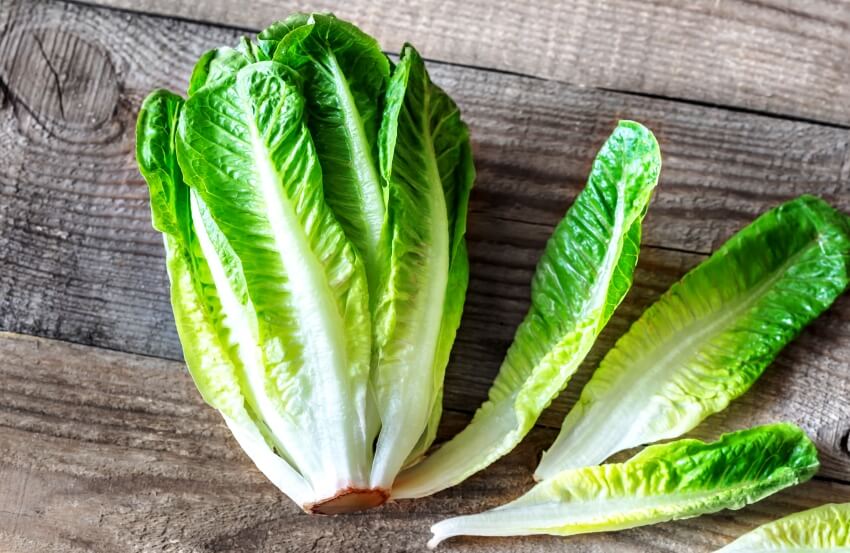

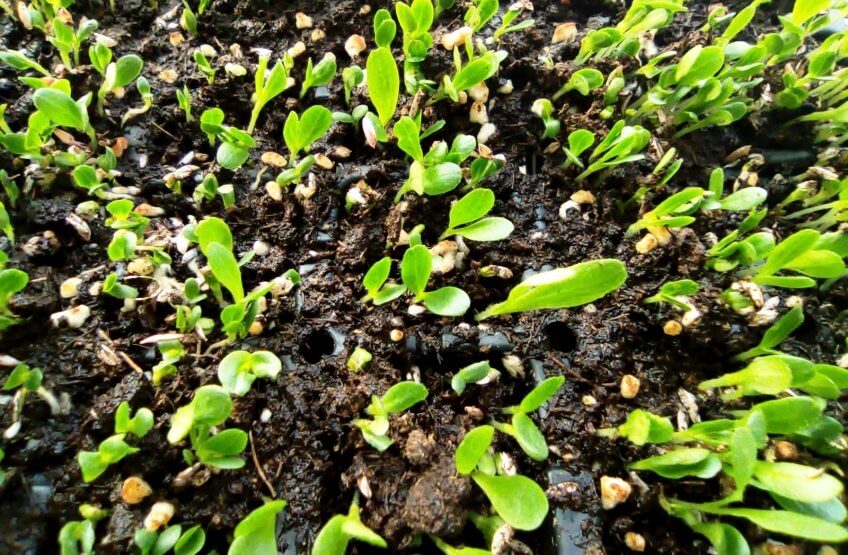
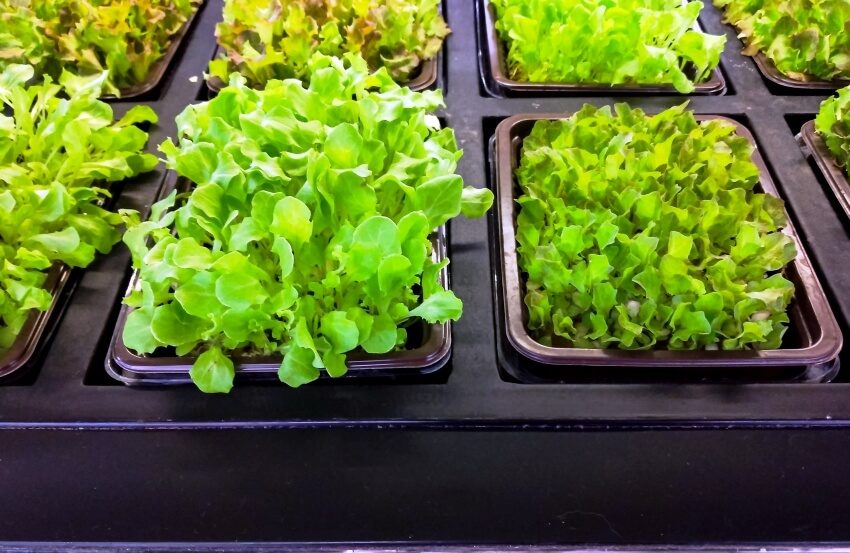
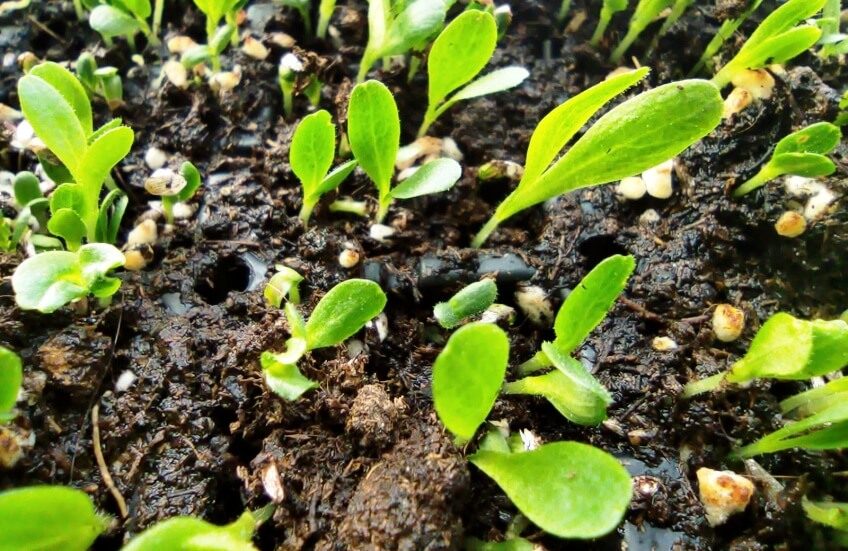
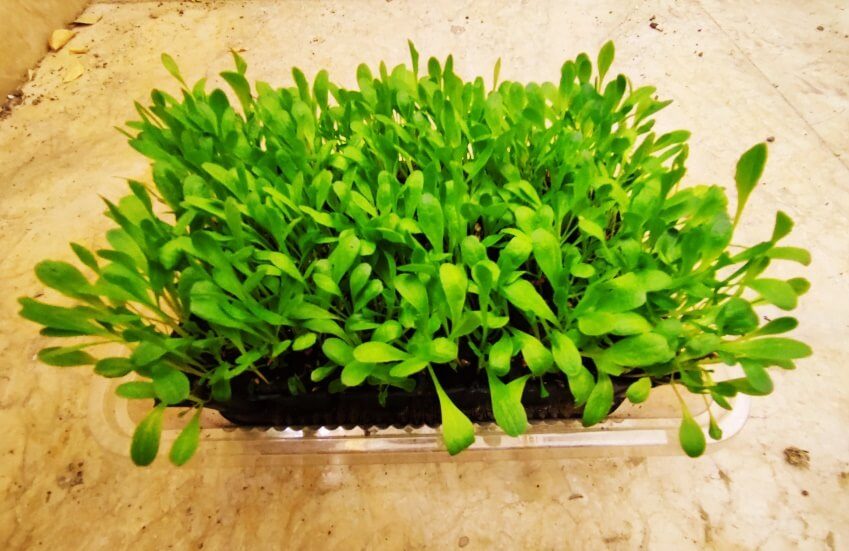
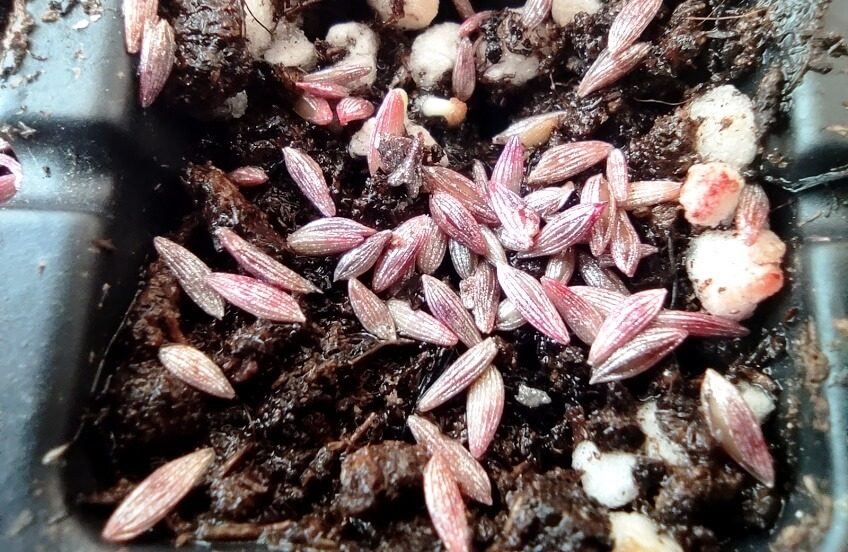


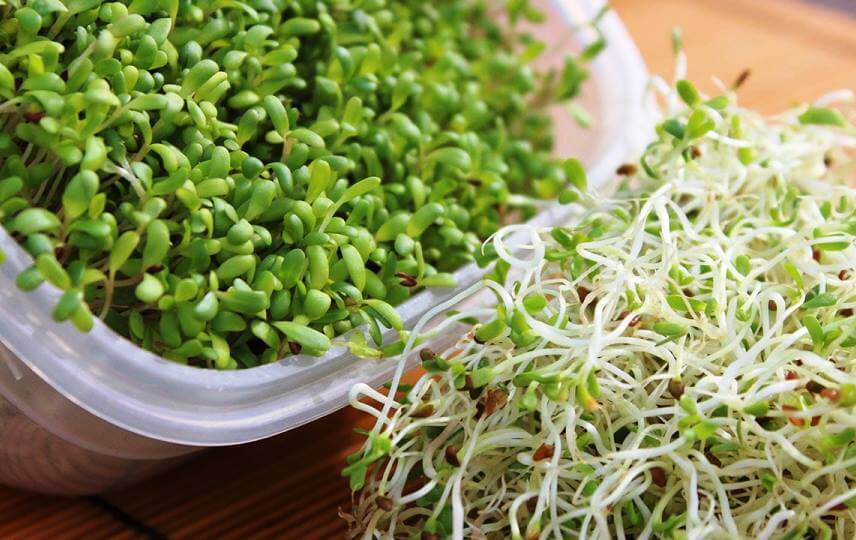
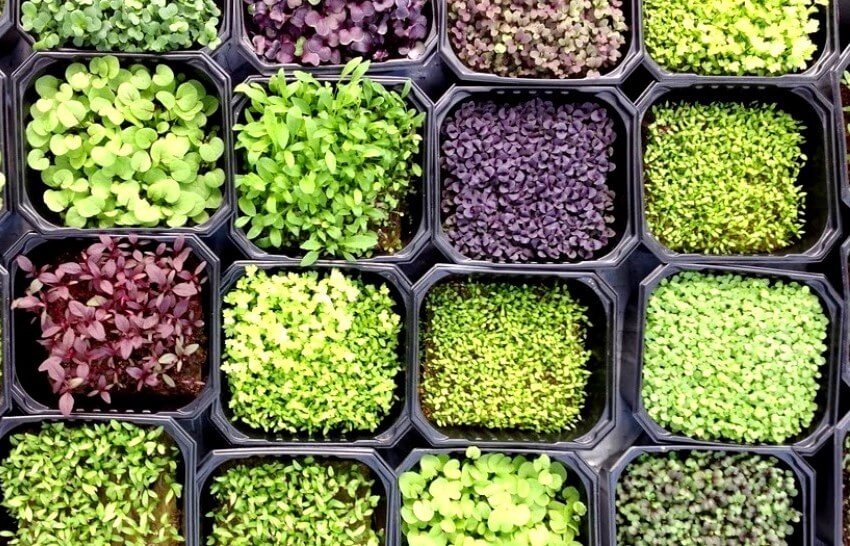
Lettuce microgreen is one of the best choices for salad mixes.